 |
Dr. Joe Ng, Assistant Professor
of Biology and Biochemistry at UAH explains how to isolate the target
protein you wish to work with. For example, a protein which produces an
enzyme associated with the initiation or spread of a particular disease
would be a good target protein. |
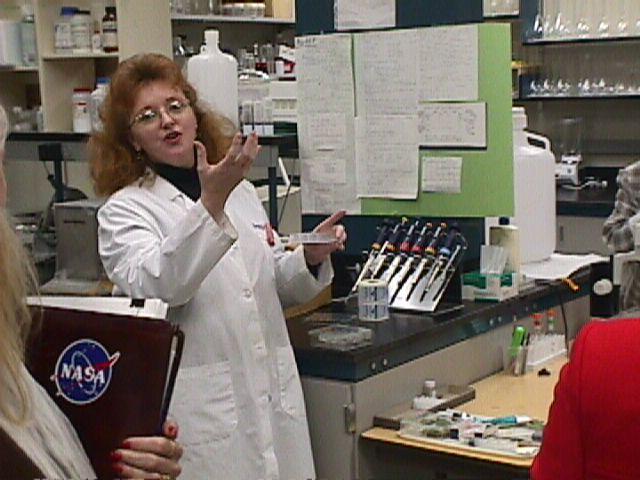 |
In order to study a particular
protein macromolecule, a high quality crystal must be produced. Mrs.
Anna Holmes describes the factors involved in the production of a
good quality protein crystal. In our experiment, the concentration
of the lysozyme protein solution is controlled by the amount of salt
added to the solution as water has a higher affinity for salt than lysozyme
protein. |
 |
The crystal system and the quality of
the protein crystals produced depend on the concentrations of the protein
and salt solution and the pH . The slower the rate of crystallization,
the higher quality of the crystals produced. Lysozyme protein crystals
have been produced in the monoclinic, triclinic, and orthorhombic crystal
systems. |
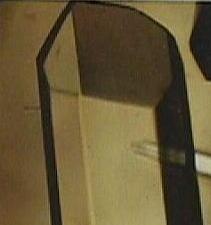 |
The microgravity environment of space
currently produces the best quality protein crystals. The ideal
crystal should be able to grow slowly in all directions without interference.
Crystals grown on Earth are subject to sedimentation affect, uneven protein
solution concentration, and a faster diffusion rate which cause imperfections
in the structure of the growing crystal. |
 |
A high quality protein crystal is mounted
in the xray crystallography machine. Electrons are fired at the crystal
producing a scatter pattern which is unique to the atomic structure of
the target protein molecule. |
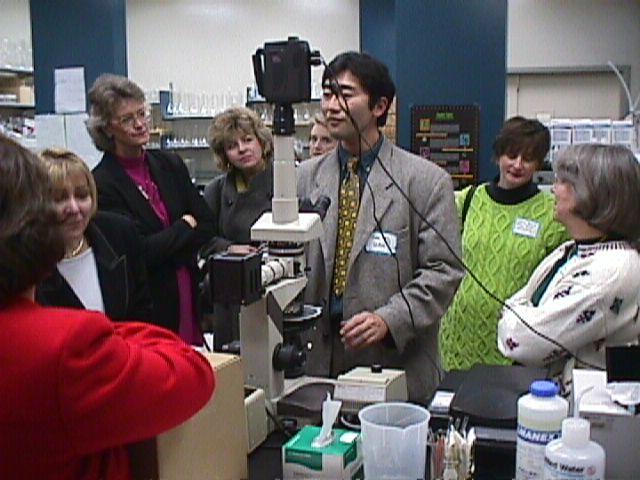 |
Once a xray diffusion pattern is produced,
it must be analyzed to produce the molecular structure of the target protein.
Advanced graphics techniques and computer software are used to analyze
the molecular structure of the protein molecule. Once the 'active
site' of the molecule is identified, 'blocker' molecular structures can
be designed to stop the enzyme production of the target protein. |
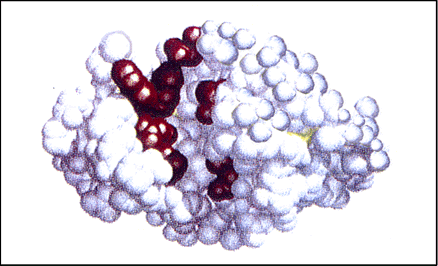 |
This is the Lysozyme protein macromolecule
atomic structure. Notice the 'active site' which is indicated by
the red atoms. |
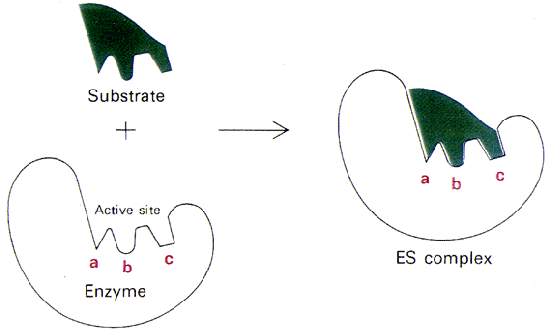 |
Once the atomic structure of the target
protein is known and the active site determined, a 'blocker' molecule can
be designed to stop the production of the undesired enzyme. This is known
as the 'lock and key' principle which is the concept behind rational drug
design. This new technology can also be used in the formulation of
advanced food products for long duration space missions as well as other
applications. |







